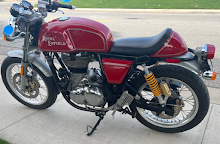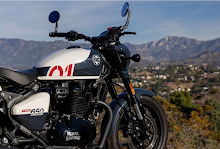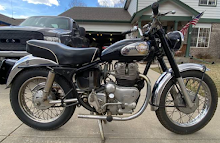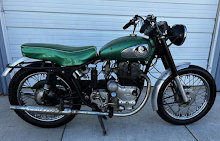 |
| The 1903 Wright Flyer, on display at the Smithsonian National Air and Space Museum. (Photo by Greg) |
Oddly, the quarried passageways that sheltered the Royal Enfield workers as they produced precision weapons and motorcycles hid another secret: the boxed up treasures of British museums, sent there to be safe from the Luftwaffe.
Among those irreplaceable artifacts was a precious American object, one that today is the pride of the Smithsonian National Air and Space Museum in Washington, D.C.
It was the first airplane, the Wright Flyer, restored as it was when Orville and Wilbur Wright first flew it at Kittyhawk, N.C. on Dec. 17, 1903.
According to the Smithsonian Institution, "During World War II, the airplane was kept in an underground storage facility near the village of Corsham, approximately 160 km (100 miles) from London, where various British national treasures were secured. The Flyer was not stored in the London subway as has been often asserted."
What was the world's most famous airplane doing hiding in a tunnel in England during the Battle of Britain?
The Flyer might have been safer across the ocean at the Smithsonian. But an argument over who had flown first had prevented that.
In 1903, before the Wrights left for Kittyhawk, the then secretary of the Smithsonian, Samuel Pierpont Langley, built his own winged machine.
Although this only succeeded in crashing into the Potomac it had a rebirth in 1914. Engaged in a patent fight with the Wrights, Glenn Curtiss finally got Langley's machine to actually fly.
The museum's insistence that this, then, must have been the world's first flying machine deeply offended Orville Wright, the surviving brother. In 1927 he sent the Flyer to the Science Museum in London.
The Smithsonian backed off its claim in 1942 and Orville relented. The Flyer returned to the United States in 1948.
It's a curious story, well told in Lawrence Goldstone's new book "Birdmen: The Wright Brothers, Glenn Curtiss and the Battle to Control the Skies."
Fascinating to me, of course, is the Flyer's obvious debt to the bicycle shop the Wrights ran back in their hometown of Dayton, Ohio. If ever there was a tribute to chain drive, the Flyer is it.
Curtiss's own connection to motorcycles is well known: before he flew he manufactured motorcycles and motors for motorcycles. Curtiss is the inventor of the twist-grip throttle.
In 1907 he designed and rode a V8-powered motorcycle to an unofficial world record that stood until 1930. That motorcycle is on exhibit in the Smithsonian National Air and Space Museum, one floor down from the Wright Flyer.
 |
| Record setting Glenn Curtiss V8 motorcycle on display at the Smithsonian. (Photo by Cliff) |
























Hmmm... Corsham is about nine miles north of the Westwood factory, and there was a different bunker there... Close enough!
ReplyDeletehttp://www.theurbanexplorer.co.uk/burlington-bunker-corsham-wiltshire/
Hmmm... Indeed! I feel I may be issuing a correction.
Delete